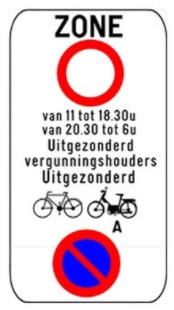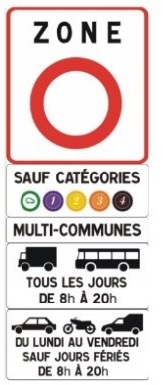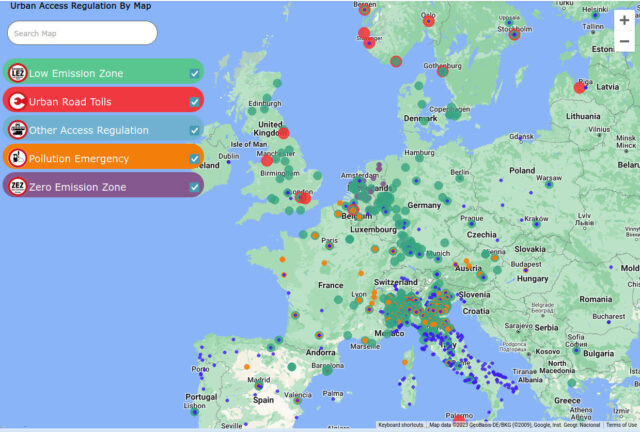This is the year when many cities in Europe that are popular travel destinations are enforcing restrictions for vehicle access either to the city center or to the entire city. The purpose is to decrease the amount of pollution caused by traffic. Access to a city may be restricted, for instance, during weekdays or during specific hours. Restrictions vary by country and by city. This article focuses on Low Emission Zones (LEZ) that affect practically all vehicles and require actions before travel.
Clean Cities Campaign has published a report that lists 320 Low Emission Zones in Europe in 2022. Although activation of some of the zones was postponed, summer 2023 is the period when a number of cities become Low Emission Zones. By 2025, 507 cities in Europe are expected to restrict number of vehicles coming into the neighborhood to decrease pollution.
The general principle how the Low Emission Zones work is that old cars, vans, lorries, and buses that emit plenty of poisons to the air have more restrictions, while modern vehicles that don’t pollute that much have less restrictions. At the top of the vehicle ranking are electric and hydrogen-powered cars. They are allowed to LEZ areas and even Zero Emission Zones (ZEZ) that are expected to be introduced in some cities in 2030.
Local drivers as well as travelers driving into a LEZ city in a car with foreign license plates may need a sticker on the windshield that indicates the classification of the vehicle. For instance, for a number of cities and regions of France, the sticker must be purchased in advance online from a government web page. For Belgium, visitors with foreign vehicles are only required to register. So, the procedure varies by country. The important thing for travelers is that the sticker purchase or vehicle registration must be completed before entering a city where LEZ has been established.
Let’s take a couple of examples how it works: Belgium and France. You can find all details for every European city that has vehicle access restrictions at this EU page.
Cities that have specified Low Emission Zones in Belgium (as of 2022, according to the EU Urban Access Regulations):

- Antwerpen
- Bruxelles
- Gent
- Wallonia Region
Belgium requires vehicle registration before entering a city where LEZ is implemented. There are, however, other access restrictions for vehicles in Belgian cities. For instance, a street or an area may be designated to pedestrians and cyclists at certain hours, but outside those hours vehicles are allowed as well.
Cities with Low Emission Zones in France (as of 2022, according to the EU Urban Access Regulations):
- Bordeaux
- Clermont-Ferrand
- Grenoble
- Lyon
- Nancy
- Paris
- Saint-Etienne
- Lille
- Lyon
- Marseille
- Montpellier
- Nice
- Paris
- Reims
- Rouen
- Strasbourg
- Toulouse

Both local and foreign vehicles must have a sticker when entering a LEZ city in France. Near the zone, you may see a traffic sign like the one in the image. The sign indicates a Low Emission Zone where (in this case) only vehicles that belong to category 1, 2, 3, 4 or is an EV are allowed. How do you know your vehicle’s category? Go to the Urban Access Regulation page, search for the city or country where you are planning to travel, and look for the category. For doing it, you will need the Euro classification of your vehicle. It is written down in the vehicle registration document.
Low and Zero Emission Zones are a long term process in Europe. The Guardian writes that there are up to 35 Zero Emission Zones (only electric and hydrogen vehicles allowed) planned in Europe by 2030. Smaller pollution-free zones are planned for the same year in parts of Paris, Copenhagen, Amsterdam, Barcelona, Berlin, Heidelberg, Milan, Oslo, Rome, Rotterdam, Warsaw, Birmingham, Liverpool and Greater Manchester.


